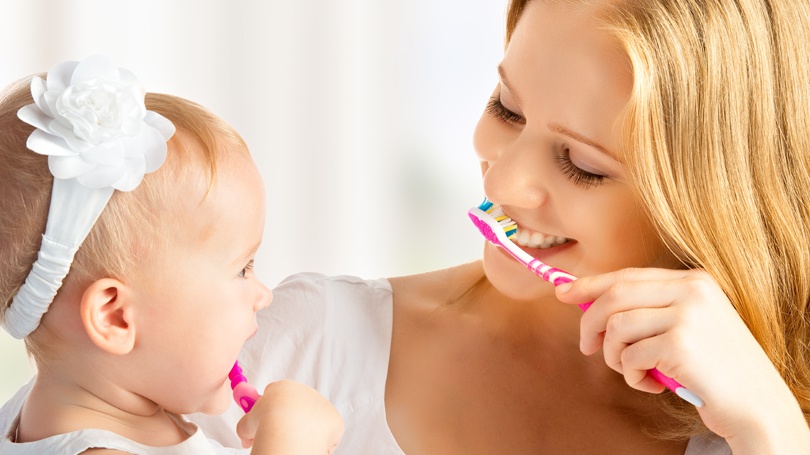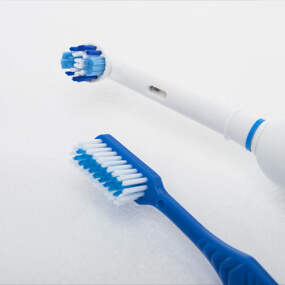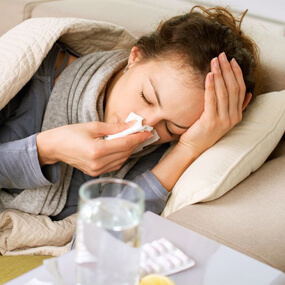How to Teach Your Children to Brush Their Teeth

The Centers for Disease Control and Prevention warns that 40 percent of American children have experienced a cavity before entering kindergarten. Modern dental science has made incredible strides. The prevalence of dental cavities overall is at an all-time low, and yet, this particular number is staggeringly high. Tooth decay is the top disease affecting children. It is five times more common among kids than asthma and seven times more common than allergies to pollen.
It is up to parents to bring this number down. We must impress on our children the importance of good oral hygiene and teach them proper brushing and flossing habits in a way that resonates with them.
It is also essential that parents appreciate the importance of baby teeth. Many problems begin with parents treating these teeth as if they are unimportant because they will be replaced, but they are quite important. Children have about 20 primary teeth, and it takes about three years for all of them to arrive. By the time your child is around 13, all 20 should be gone and replaced by permanent teeth.
Despite this inevitable replacement, baby teeth are important because they serve as guides for the adult teeth. If a child loses the baby teeth prematurely, a number of problems can occur, including the adult teeth not having enough room to emerge properly. Issues with these teeth can also cause infections and pain as well as interfere with eating, cause speech impediments, and lead to low self-confidence.
This is why it is imperative to begin good oral care as soon as possible. The parents should be responsible for that care initially and pass that knowledge onto their kids as it becomes practical to do so.
When to Start Brushing
Good oral hygiene can begin right away. You can clean an infant’s mouth after feeding. Cradle the head, and use the free hand to wipe the entire mouth with a wet cloth, wet gauze, or xylitol wipe. You can begin brushing the teeth as soon as that first baby tooth emerges.
Brushing Tips
- For an infant, it is recommended that you use an age-appropriate soft-bristled toothbrush and plain tap water. Using fluoride toothpaste at this age is generally not recommended, and you should not do so unless you have been explicitly advised by a pediatrician or dentist.
- If you are advised to use a fluoride toothpaste early, then you want to apply a smear for children younger than 2 and a pea-sized amount for children younger than 6. Brush the child’s teeth in the bathroom, and as soon as the child is aware, use this activity as a teaching moment.
- Children should use fluoride toothpaste in an adult manner as soon as they are old enough to spit it out after use. Kids should brush their teeth on their own as soon as they are able, which is usually about age 6 to 8, but parents should continue to inspect the mouth for a job well done.
- With parental guidance, kids as young as toddlers can spit out their own toothpaste. This helps to establish the expectation of spitting it out and can greatly improve oral health at that young age.
- Motivate your child to brush twice a day: once after breakfast and again before going to bed. Establishing a routine at a young age helps your child immensely as he or she grows older.
- The bristles should be very soft. Bristles deemed soft for adults may be too abrasive for kids. A battery-powered toothbrush is an option, and you may want to discuss this with your dentist.
- Just as you do with your own, replace your child’s toothbrush or brush head about every three months or as soon as the bristles start to fray. Whenever your child recovers from a cold or other illness, discard the current toothbrush or brush head and replace it with a new one.
Steps for Brushing
As an adult, it is easy to take the basics like brushing and flossing your teeth for granted. Everything is new to your child, however, and so assistance and guidance should be provided.
- Step #1: Angle the toothbrush 45 degrees toward the upper or lower gums, depending on which teeth you are brushing. That parent can take control and instruct until the child can do it on his or her own. At that point, let the child do it, and you can supervise.
- Step #2: Either a circular or back-and-forth motion is fine. The goal is to use long strokes that cover the entire surface being brushed. Teach the child to take care to get the top of the tooth as well as the front, backside, and any exposed surface.
- Step #3: The toothbrush should be held in an upright position to get behind the front teeth on the top and on the bottom. This is an area kids often miss or do not brush well.
- Step #4: Brush the tongue or use a tongue scraper because bacteria builds up there as well.
Steps for Flossing
Children should begin flossing as soon as they have teeth in close proximity. Instill in the child that flossing is crucial to disrupting plaque and avoiding tartar and should be done once a day.
- Step #1: You can floss for your child until he or she is ready to take over. At that point, teach your child how to twine the floss between the thumb and index finger for greater control. Instruct your child not to use too much force. A gentle action is all that is needed for clean teeth.
- Step #2: Curve the floss into a C-shape around each tooth, and guide the floss not just between the teeth but between the teeth and gums as well. Reinforce in your child that you floss one tooth at a time rather than flossing both teeth at the same time.
- Step #3: Adjust the floss in your fingers so that you are using a new section each time. This avoids reintroducing the food particles and plaque that you may have just removed.
- Step #4: If your child has wider spaces between any teeth, you may use an interdental toothbrush.
Great Oral Care Into Adulthood
It all begins here. If you establish good oral hygiene now, your child will be inclined to continue it as an adult. You may also want to educate your child that great oral care is about more than just avoiding tooth decay and gum disease. Poor oral hygiene has been linked to heart disease, diabetes, kidney disease, dementia, and so forth. Your child’s first visit to a dentist should be within six months of that first tooth erupting. Your child should then see his or her dentist every six months after. Instill in your child how important it is to have their teeth cleaned and mouth examined on a regular basis.
Ensure Excellent Oral Health for Your Children
It is never too young to start taking care of your teeth and gums the right way. This is why it so important to teach your children, ensure that they brush and floss every day, and take them to see a dentist twice a year. Since your children will enjoy pain-free teeth, they will see visiting the dentist as a positive experience and embrace it as an important step in enjoying a long and healthy life. Jeffrey D. Clark, DDS, is a foremost dentist in the Scottsdale area who wants to help you and your children enjoy beautiful, healthy smiles. Call Scottsdale Cosmetic Dentistry Excellence at 480 585 1853 to schedule your appointment.




